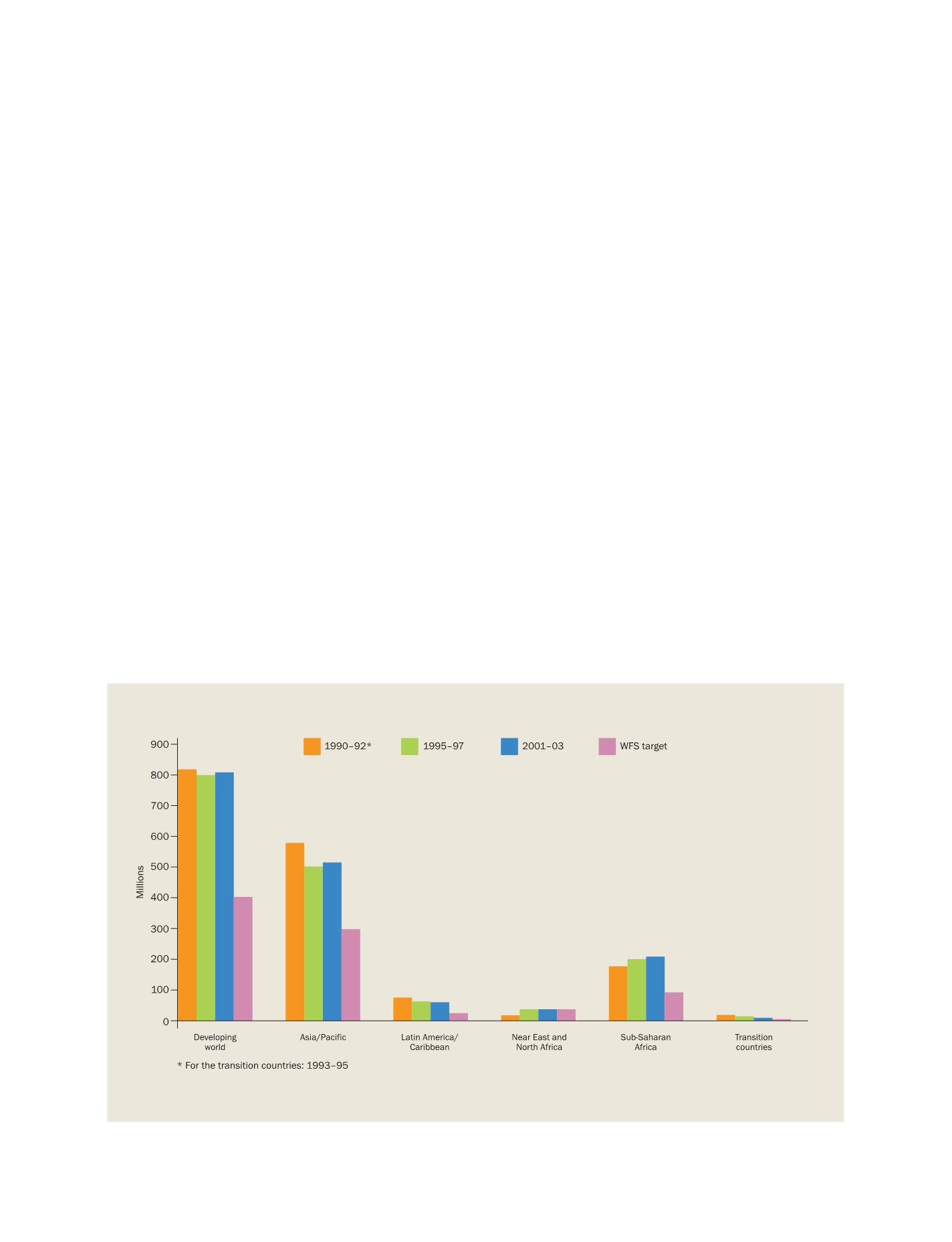

[
] 248
proteomic and new breeding techniques; enhanced agricultural
production and efficiency; whole-farm management systems aimed
at multifunctional purposes delivering ecosystem services (including
food, feed, fibre, biofuels, wildlife habitat, environmental services
etc.) while preserving the integrity of these ecosystems; energy conser-
vation and efficiency practices to reduce agricultural dependence on
fossil fuel-based technologies, and managing the risks associated with
biotic and abiotic factors (e.g. droughts, floods, pests, invasive species
etc). However, the impact of these technologies will differ from region
to region because of the financial constraints and the rate of the adop-
tion of new technologies by producers and other land managers.
The Global Earth Observing System of Systems (GEOSS) is one
promising technology which could help meet the information needs
of global agriculture at the local, regional and global level. The GEOSS
can monitor and assess the condition of agricultural ecosystems and
manage them for optimum use of inputs (water, nutrients, chemicals)
and maximum output (yields, environmental services, wild life habitat,
biofuels, etc). It can provide advance warning of weather and climate-
related events to minimize their impact and manage their risks for
avoiding loss of services. It can conduct observations for scientific
explorations and technological innovations by researchers around the
world, and provide necessary information and knowledge for agri-
cultural managers and policy makers to make timely decisions and/or
establish sound agricultural policies. In addition, the GEOSS can
provide early warning and assessments for combatting natural disas-
ter affecting agriculture and rural regions, and food aid programmes.
Future prospects
While new technologies can help overcome many of the challenges
our food and agricultural system faces, there are fundamental uncer-
tainties associated with the role of agriculture in the 21st
century global economy which will impact our quality
of life. These uncertainties include, but are not limited
to the extent of biofuels and bio-based product devel-
opment and the factors influencing their use; the ability
to manage the risks associated with weather and climate,
and mitigate their impact and/or adapt to them; imple-
mentation of sustainable development principles to
allow multi-use of agro-ecosystems while maintaining
their integrity and quality; population migration, capac-
ity building, training and education, and the scientific
and technical cooperation and coordination between
developed and developing nations.
Agricultural research and innovations together with
21st century technologies are needed to satisfy imme-
diate needs of growing population while maintaining
long-term sustainability of agro-ecosystems; to effec-
tively manage the risks associated with environmental
changes, mitigate their impacts on agro-ecosystems
and/or adapt to them; to satisfy consumer demands by
providing safe, affordable and adequate food, feed, fuels
and other services from agro-ecosystems, and to
promote a balanced approach between ‘global’ versus
‘local’ agricultural development to reduce the disparity
between developed and developing countries.
Ultimately, it will take a concerted effort by scientists,
agricultural producers and policy makers everywhere to
overcome agriculture’s grand challenge for the 21st
century – the sustainable production of food, fibre, fuel
and more for the entire world.
Source: FAO
Food distribution and nutritional needs
Agricultural output has grown at about two per cent per year since 1950, but about a billion people in the world still suffer from hunger and malnutrition
S
OCIETAL
B
ENEFIT
A
REAS
– A
GRICULTURE
















